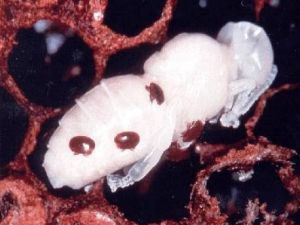
The need for a backup bee has become critical, particularly in almond orchards. Almonds are California’s second-largest crop, injecting an estimated $21 billion annually into the state’s economy. In 2016 California’s almond growers needed nearly 1.9 million honeybee colonies—almost three-quarters of all the commercial colonies in the country—to pollinate their 940,000 acres.
...
Annual colony losses in the U.S. for the past 11 years have ranged between 29 and 45 percent. Add in the ever-expanding almond acreage—from 570,000 acres in 2004 to more than a million today—and the entire system is stretched.
...
[The Wonderful Company, the largest almond grower in the world] chose to develop Osmia lignaria, a native mason bee known as the blue orchard bee, or BOB.
...
In 2017 Wonderful needed about 76,000 honeybee colonies to pollinate its almonds (at two colonies per acre). But that number will diminish by 320 this spring because [Gordon Wardell, director of bee biology for the Wonderful Company] will put 128,000 female BOBs into the orchards—the largest deployment ever. If Wardell’s experiment succeeds, the results could have far-reaching implications for the almond industry as well as a host of other early-blooming crops—from apples and cherries to apricots and peaches. All told, more than a million and a half acres could benefit from having BOBs as a backup—if they prove worthy this year.
https://geneticliteracyproject.org/2018/02/23/backup-pollinators-california-almond-fruit-producers-hope-blue-orchard-bees-can-reinforce-honeybees/
Paige Embry | Food & Environment Reporting Network | February 23, 2018





